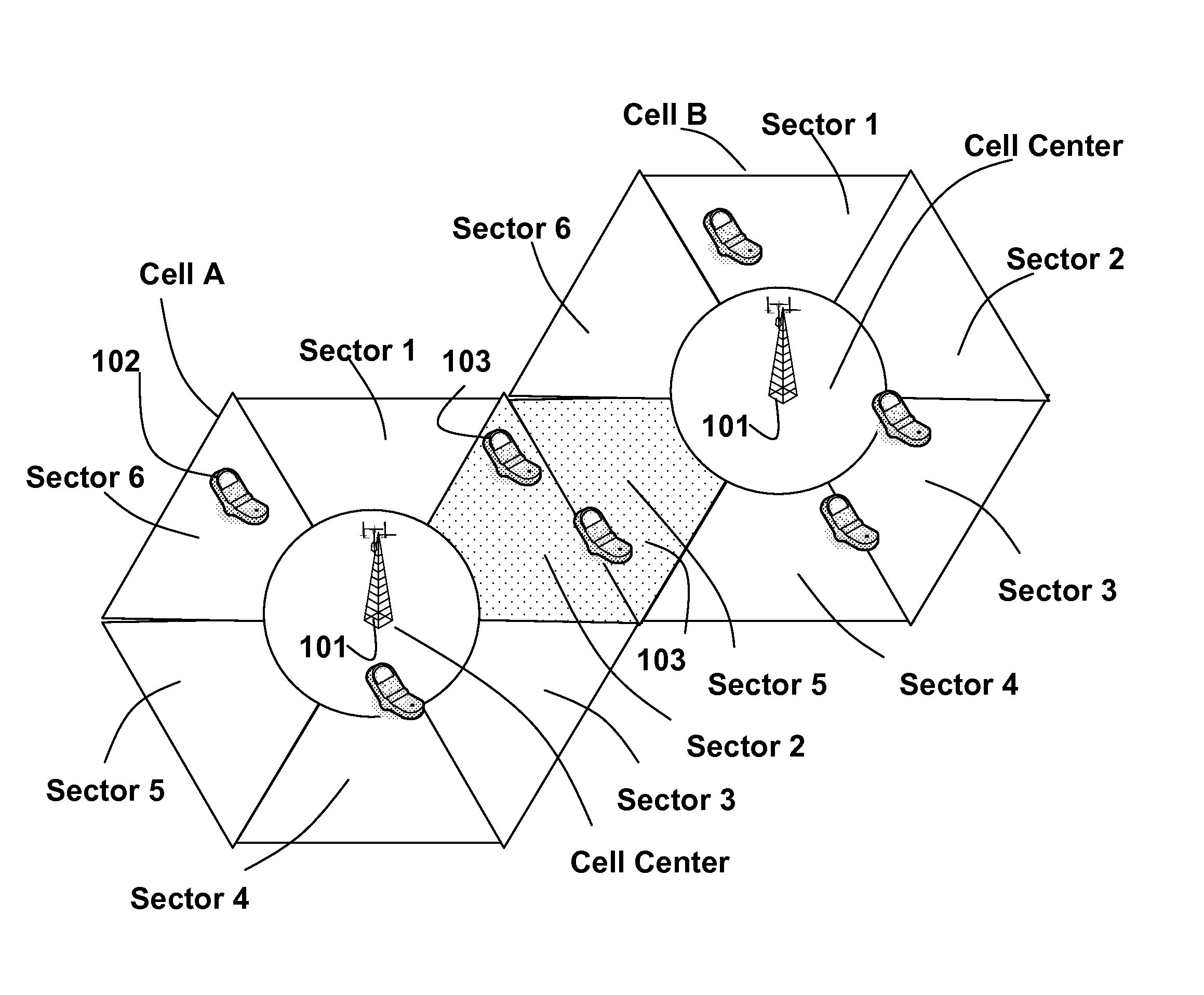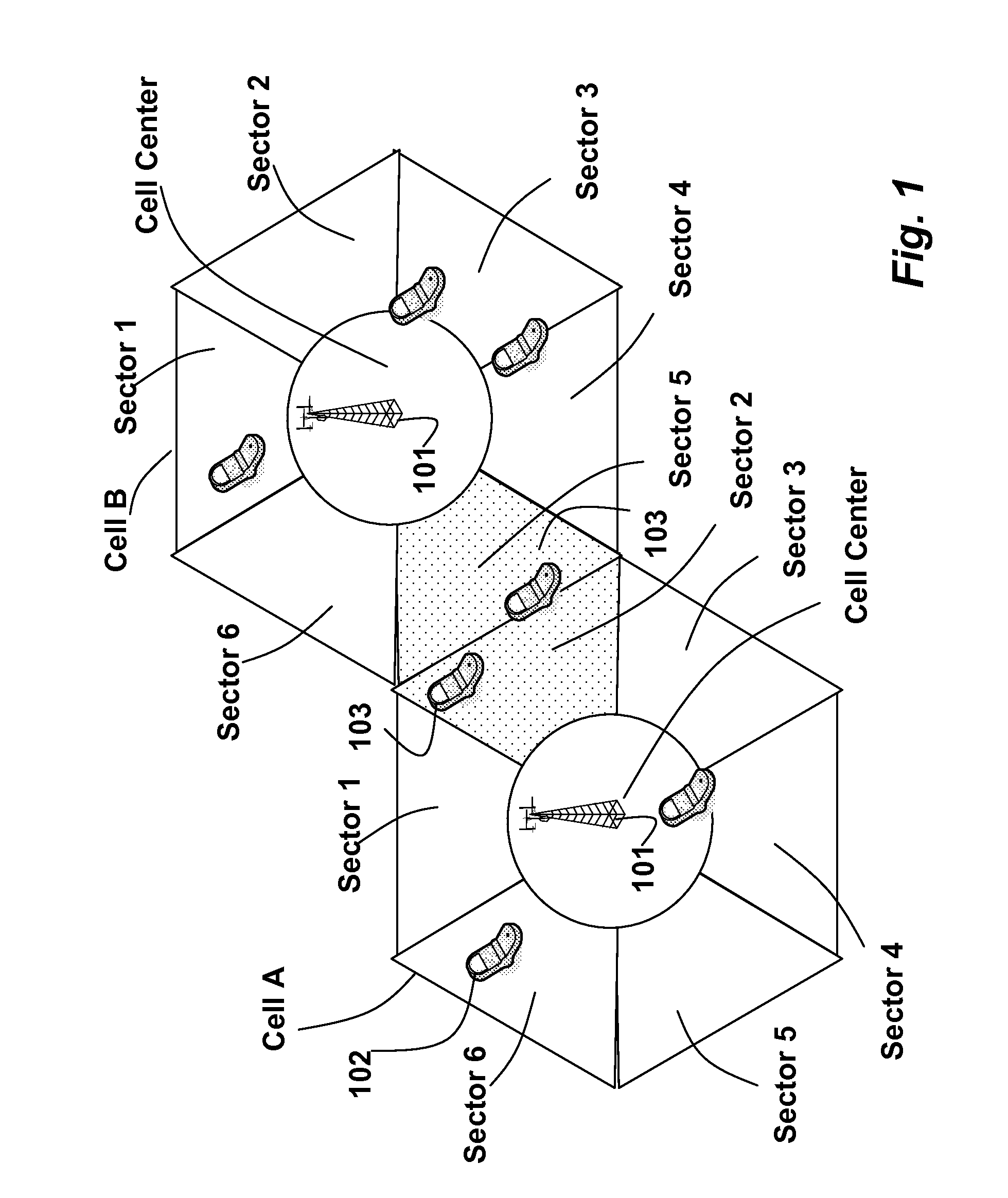Inter-cell interference prediction for frequency resource allocation
a technology of frequency resource allocation and inter-cell interference, which is applied in the field of wireless cellular network prediction, can solve the problems of difficult realization and primary limitation of cellular network performance, and achieve the effects of reducing ici, increasing network capacity, and complete flexibility
- Summary
- Abstract
- Description
- Claims
- Application Information
AI Technical Summary
Benefits of technology
Problems solved by technology
Method used
Image
Examples
Embodiment Construction
[0017]Network
[0018]As shown in FIG. 1, a network according to embodiments of the invention includes a set of base stations (BSs) located in cells. FIG. 1 shows cell A and cell B. Each BS serves a set of mobile stations (MSs) in each cell. Each cell is partitioned into a cell center and six sectors near the edges of the cell for the purpose of frequency and power allocation. The partitions can be effect by using multiple directional antennas at eh BSs. The stations communicate data packets using frames.
[0019]Due to power control, frequency resources used for the MSs in the cell center do not cause significant inter-cell interference (ICI) to MSs in adjacent cells. However, MSs 103 in sector 2 of cell A and sector 5 of cell B can experience ICI if the same frequency resource is allocated by the BSs.
[0020]Prediction Method
[0021]FIG. 2 shows the method for predicting frequency resources allocation according to embodiments of the invention.
[0022]Each BS has access to a single, shared and...
PUM
 Login to View More
Login to View More Abstract
Description
Claims
Application Information
 Login to View More
Login to View More - R&D
- Intellectual Property
- Life Sciences
- Materials
- Tech Scout
- Unparalleled Data Quality
- Higher Quality Content
- 60% Fewer Hallucinations
Browse by: Latest US Patents, China's latest patents, Technical Efficacy Thesaurus, Application Domain, Technology Topic, Popular Technical Reports.
© 2025 PatSnap. All rights reserved.Legal|Privacy policy|Modern Slavery Act Transparency Statement|Sitemap|About US| Contact US: help@patsnap.com



